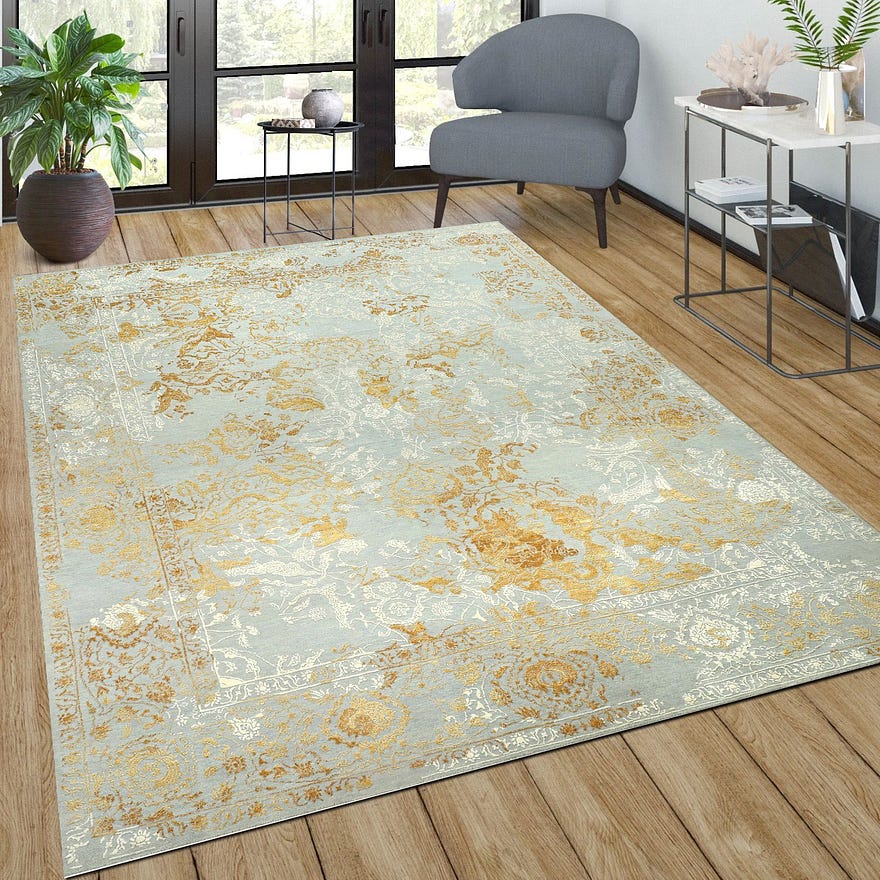Silk Rugs
The Timeless Elegance of Silk Rugs: Beauty, Craftsmanship, and Luxury
Silk rugs are more than just floor coverings — they are intricate works of art that represent centuries of craftsmanship, cultural heritage, and refined taste. From the bustling bazaars of Persia to the quiet ateliers of Kashmir, silk rugs have long been celebrated for their exquisite beauty, delicate sheen, and unmatched detail. In this blog post, we explore the allure of silk rugs, what makes them unique, and why they remain a cherished addition to homes around the world.

What Makes Silk Rugs Special
Silk, a natural fiber produced by silkworms, is renowned for its smooth texture, luminous appearance, and strength. When woven into rugs, silk creates a surface that shimmers in the light, revealing intricate patterns and subtle color shifts depending on the viewing angle. This natural luster is one of the most distinguishing features of silk rugs and contributes to their luxurious appeal.
Compared to wool or synthetic fibers, silk allows for a higher knot density — sometimes reaching up to 1,000 knots per square inch or more. This density enables artisans to create incredibly detailed motifs, often inspired by nature, mythology, or traditional geometric patterns. The result is a rug that resembles a painting, with depth, dimension, and fine craftsmanship.
A Rich Cultural Heritage
Silk rug weaving has a rich history rooted in regions like Persia (modern-day Iran), Turkey, India, and China. Each region has developed its own techniques, motifs, and color palettes, reflecting local customs, beliefs, and environments.
Persian silk rugs, for instance, are known for their symmetrical designs and classical floral patterns. In contrast, Indian silk rugs from Kashmir often feature elaborate medallions, paisley motifs, and vibrant hues. Chinese silk rugs might incorporate symbolic elements such as dragons, phoenixes, and peonies, echoing their imperial past.
These rugs are not only decorative but often hold symbolic meaning. In many cultures, owning a silk rug was a sign of wealth and status, and some pieces were even used as dowries or passed down as heirlooms.
Caring for a Silk Rug
While silk rugs are stunning, they do require special care to preserve their beauty. Due to the delicate nature of silk fibers, they are best placed in low-traffic areas such as bedrooms, sitting rooms, or formal living spaces. It’s advisable to keep them out of direct sunlight to prevent fading and avoid heavy furniture that might crush the fine fibers.
Cleaning should be handled by professionals who specialize in delicate textiles. Regular vacuuming (without a beater brush) can help maintain cleanliness, but spills should be addressed immediately with a clean, damp cloth — never scrubbed.
An Investment in Art and Luxury
Owning a silk rug is like possessing a piece of living history. Beyond its visual appeal, a hand-knotted silk rug represents months or even years of labor, artistic skill, and cultural tradition. Though often more expensive than wool rugs, silk rugs are a worthwhile investment that can last generations when cared for properly.
Comments
Post a Comment